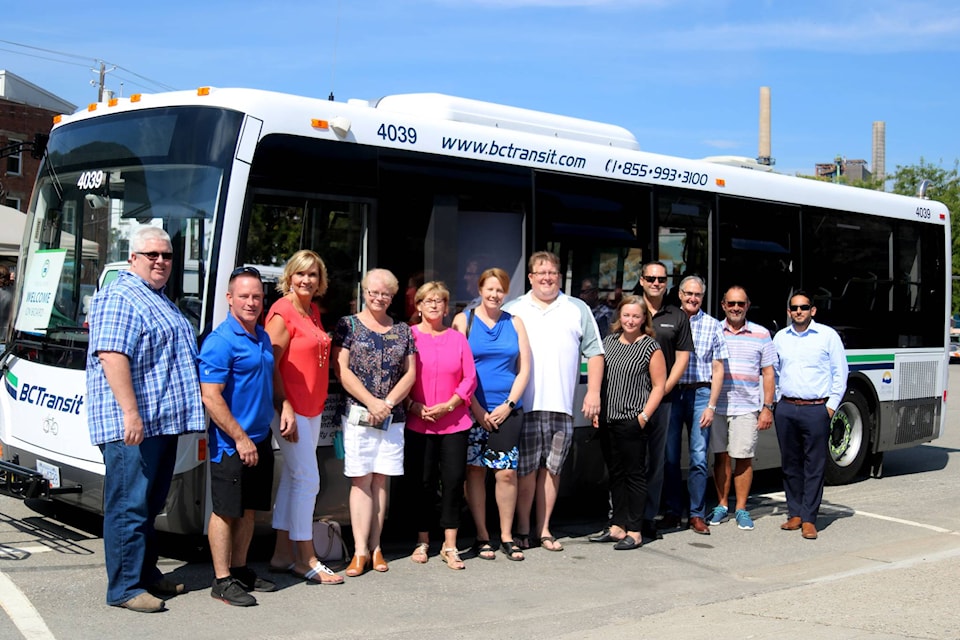BC Transit rolled out the first of seven new buses coming to Greater Trail at the Trail Market on Friday.
Representatives from Greater Trail municipalities and West Kootenay Regional Districts joined Trail Transit reps, Denny Byrne director of fleet management from Victoria and John LaGourgue director of Grande West Transportation, the company that builds the buses, at an unveiling ceremony on the Esplanade, which introduced the public to a more compact, but technologically superior fleet.
“This is the start of upgrading the fleet,” said Trail Mayor Mike Martin. “One of the concerns that we’ve had especially in the Trail, Lower Columbia region is utilization of the buses. We have these large buses running around with very few passengers, so we’ve been lobbying for smaller buses and this will address those needs.”
Trail’s current buses are 17-years old and the addition of seven new Vicinity buses includes two 30-foot buses that can seat 24 and accommodate 20 standing passengers, and five 35-foot buses that have a capacity of 30 seats and 24 standees. The smaller buses cost about $319,000 each, while the larger buses run around $347,000. They are funded by the Province and local government via a lease-fee program, and the almost $160 million in federal and provincial funding for BC Transit projects announced in 2016.
The state-of-the-art rigs will have closed-circuit TV cameras to improve safety and monitoring, two mobility aids, a bike rack, and doors at the front and the back for ease of entry and egress.
Grande West in conjunction with the province built the first prototype in 2010, then did a pilot study of 15 buses in 2013 and are now set to deliver over 100 buses to communities across BC. While specifics on fuel efficiency and costs weren’t yet available, the director of fleet management is confident the ride will be more eco-friendly.
“We don’t have any new quantifiable data yet,” said Byrne. “But with anything new technology-wise, especially a vehicle, those buses are 17-years-old, so guaranteed just to have better fuel efficiency, but we don’t have anything quantifiable to measure that there will be a 30 per cent increase.”
However, LaGourgue added, going from a 40-foot to 30-foot bus, there is a 40 per cent decrease in capital costs. And more than anything, comfort and drivability has received high marks, said Byrne.
“It’s very comfortable. There’s a lot of good knee-to-hip ratio, as we call it, so in terms of sitting on the bus, you don’t feel like you’re jammed in like a little sardine, so it’s actually quite comfortable.
“We’ve had great feedback from the communities we’ve been in about this bus, they’re very positive and optimistic, not just about its esthetics, but functionality, and we got great feedback from the drivers, they really like the way it handles.”
The new buses are a benefit for the region and its riders, however, the ongoing challenge for West Kootenay Transit and local governments is to get more people to leave their vehicles at home and take advantage of the service offered.
“It’s encouraging to see the smaller buses,” said Martin. “It’s a standard above what we have, and hopefully that will attract ridership. I think we have a pretty good schedule, the timeliness of the buses, the schedule and the amenities offered, maybe we’ll see some increased usage, that would be the ultimate.”
Two of the buses will be delivered this summer, while the other five roll into Trail in 2018.
